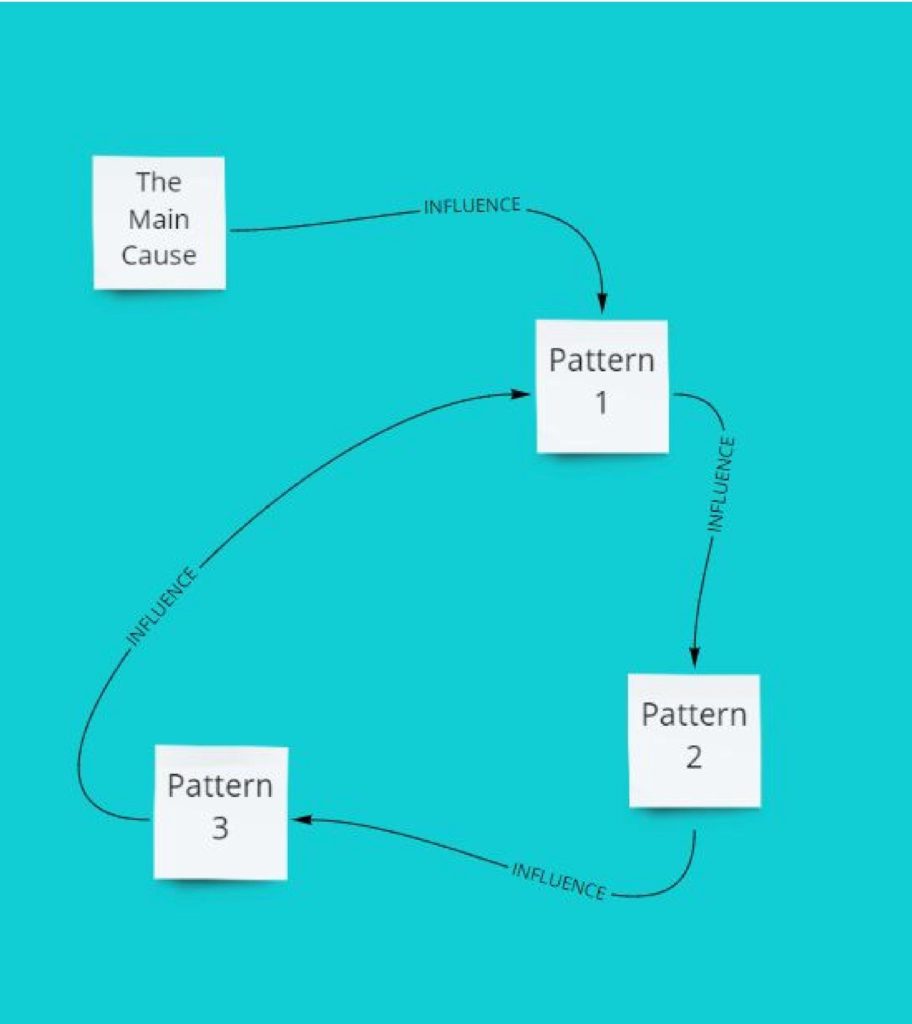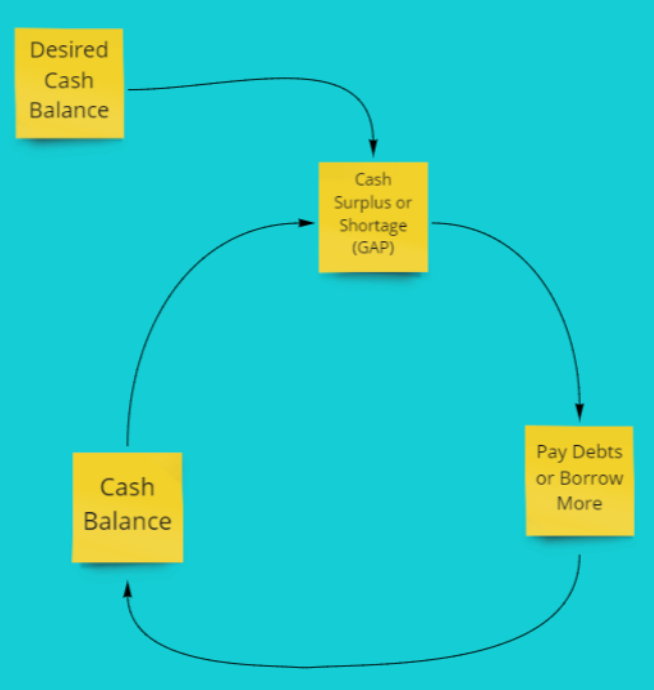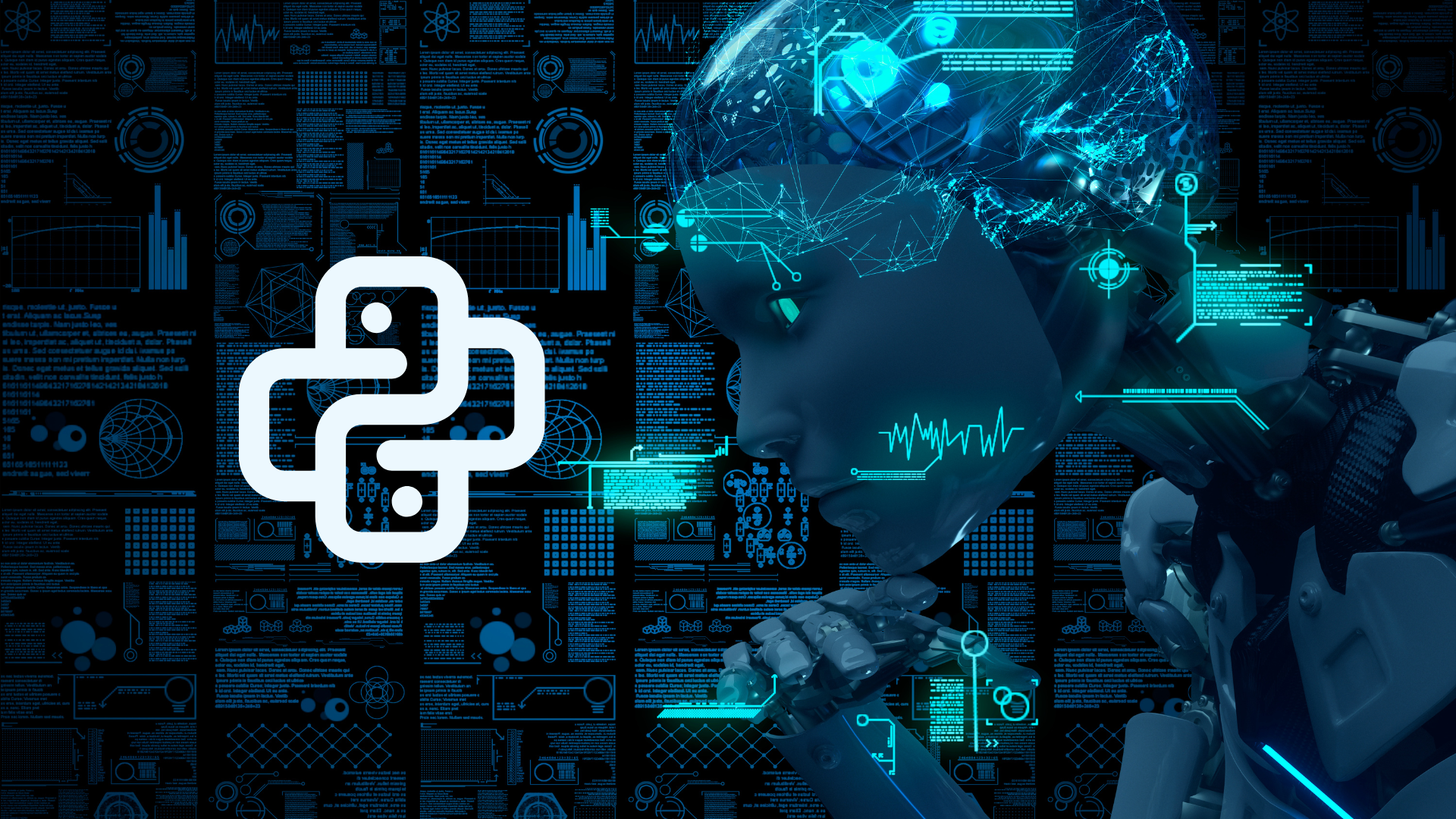How do your actions make a reality? And how are you able to change them? This book is for those who are interested in turning their organization into a learning organization. No organization can rely on only a certain number of its employees for its growth and development. Rather, all its members must learn to work together and see their outside world and inner problems as a whole and from a new perspective.
If you want to build a learning organization, you must invest in the creation and development of five disciplines:
- System Thinking: A good future happens when they are in a certain frame working systematically together. Each part of a system affects the other parts even if it’s not visible. You can only understand a system when you look at it as a whole, and not as individual parts.
- Personal Mastery: A system in which a person constantly clarifies and deepens his personal views, concentrates his energy and power.
- Mental Models: Systems thinking is the perspective of your understanding of the world. There are times that we do not know how systems thinking can affect us.
- Shared Vision: The ideal of what leads an organization, which is the capacity to create a common ideal of the future we seek.
Team Learning: Teams start to learn through dialogue. With conversation, one can identify patterns of interaction in teams that do not believe in learning.
HINDRANCES TO LEARNING
There is no doubt that most organizations learn poorly. The reasons are blocks, such that however you try hard, the results are dissatisfying.
- I am my position: There are times when people introduce themselves as their own position and do not understand that a project can lead them out of their knowledge and profession, and they try to hide or overlook the fact of a shared vision and purpose using “expert”comments. Collaboration means nothing to these people.
- The enemy is out there: This problem happens when you say whatever problem there is in your sector is because of other sectors, any problem in your organization is the result of other organizations, and any problem in your market, is the results of other markets and so on. Because of the outer environment, you are screwed. Instead, try to scrutinize the error to learn.
- The illusion of taking charge: Futurism does not mean leadership. Being proactive and accepting too much responsibility is as dangerous as irresponsibility. Some justify passivity as paying attention to the future and taking responsible action against it.
- The fixation on events: The most dangerous thing that can happen is to focus on linear short-term events. In an organization where the managers only think about routine matters, you cannot talk about increasing learning. Creativity is dead in these organizations.
- The parable of the boiled frog: Those who are accustomed to the current situation because of the gradual deterioration of the situation and do not feel worried, or because of the gradual increase of the threat, do not take it seriously and do not realize it.
- The delusion of learning from experience: The most complex problem facing organizations in terms of learning lies in the fact that “the best point of learning is experience.” But you never directly test the results of many of your most important decisions. The results of the most basic decisions that are taken in organizations that have learning effects are only determined after several years.
The myth of the management team: The trust in management teams and their activities without knowing their principles can be dangerous. Most of these teams work professionally for nothing and give an illusion of too much workload. They can have hours of meetings to sign some paper while they know nothing is about to happen and it’s just a show.
PRISONERS OF THE SYSTEM OR PRISONERS OF YOUR OWN THINKING?
- Structure Influences Behavior. The structure of the organization affects its performance and not external matter, nothing should be blamed other than its organization.
- Structure in Human Systems is Subtle. And that’s because the decisions people make which will be known as a list (goals, rules and norms) is the results of structures.
- Leverage Often Comes from New Ways of Thinking. People have potential leverage that they don’t use because they don’t understand how they create instability, and they just focus on their own decisions. They receive tangible results but when something gets ruined they blame someone else.
In an organization where the prevailing attitude is to face everyday challenges, there is no place for productive learning. Such a matter requires a structured framework and a systematic approach in which individuals are able to discover the structural causes of behaviors. A strong desire to build a desirable future is necessary but not enough.
THE LAWS OF THE FIFTH DISCIPLINE
- Today’s problems come from yesterday’s “solutions.” “quick fix” solutions of today can make problems and more stress in the future. Solutions that move the problems from a part of the system to another part can hide the major problems.
- The harder you push, the harder the system pushes back. In Orwell’s Animal Farm, there was a cart-horse that always had an answer to every problem and his motif was “I will work harder”, which looked like a good motto to persuade others to work, but this resulted in giving more work to him, which is called “compensating feedback”.
- Behavior grows better before it grows worse. The challenge with compensating feedback is that it might have good results at first but then they change to awful challenges in the long term.
- The easy way out usually leads back in. Imagine someone who has lost his key in front of his flat door at night, and looks for it in the front street, just because they are related, and yet not he cannot find it. If the solution is this easy then why can’t everyone find it? so the problem is still there, as the result of nonsystematic thinking.
- The cure can be worse than the disease. Nonsystematic cures can be addictive and require more solutions.
- Faster is slower. In every system, whether natural or complex organizations, changes take time and results come in 3 to 6 months’ time. If for any reason you try to move fast, be it to finish a project for a client or increasing the growth rate, it will be much slower.
- Cause and effect are not closely related in time and space. As the results of moving forward come later, also you should know that small changes can have huge effects later. Since you cannot see these changes at the time, you blame the visible things and set your hopes high on later effects which will fail again.
- Small changes can produce big results – but the areas of highest leverage are often the least obvious. “Tackling a difficult problem is often a matter of seeing where the high leverage lies, a change which–with a minimum of effort–would lead to lasting, significant improvement.”
- You can have your cake and eat it too – but not all at once. Normally companies make quick decisions on “either, or” with unreal incidents. Seeing the situations from a new perspective can help them see the dark parts of the problem and help them get rid of the dilemma.
- Dividing an elephant in half does not produce two elephants. Living systems have integrity and their characteristics should be examined throughout the whole of systems. Organizations also have these characteristics. For understanding most of the challenges, the management should consider systems of the organization holistically.
There is no blame. You normally think environmental conditions are the reason for failures. The competitors, market changes, and government are some of these conditions. System thinking teaches us that there is nothing outside of the system that can be the reason for problems. The solution is in the relationship between parts of the organization and systems.
A SHIFT OF MIND
“The essence of the discipline of systems thinking lies in a shift of mind: seeing interrelationships rather than linear cause-effect chains, and seeing processes of change rather than snapshots “
First, you need to understand the concept of reinforcing feedback, which helps in understanding types of structures in the systems that happen again and again. Feedback will show which skills need to be developed. Reality is made from circles of cause and effect. But you think of it as lines. This is the first limit from system thinking. And understanding what each circle says can lead to understanding the causes and their behaviors and impact later.
The main point is to see how the structures make patterns. With understanding the influence of the cause you will understand how the patterns are repeating themselves.

There are 2 types of feedback processes:
- Reinforcing feedback: to understand how a small change grows and expands
- Balancing feedback: to identify the source of stability and strength
(The reinforcing feedback reminds of one major talk in tourism, that if a tourist goes back happy, he will persuade 3 other people to come and visit your destination, but if he goes back sadly, he will stop 12 people from coming, it’s just word of mouth that can influence people).
BALANCING CIRCLE DIAGRAM
It shows the balancing feedback process and to understand it is better to start from the gap between optimal and existing conditions and move on.

DELAYS
The time difference between when you do something and its effects will happen with some delays which can affect the system’s function. If you identify these delays you can make a positive impact out of it. The important thing is to minimize the delays to win in the market.
SYMPTOMATIC INTERVENTION
There are times when the fundamental problems show symptoms that you should pay attention to, although they can be obscure or costly. So people “shift the burden” to “quick fixes” which can have short term benefits to the symptoms temporarily, and not finding out about the main problems.
LEVERAGE
Leverage is where small actions lead to significant improvements. Nonsystematic thinking focuses on low-leverage changes, where the stress is significant on symptoms. But in systems thinking organizing the complexities into understandable stories that show the problems and their solutions is a major point.
SYSTEMS THINKING
“System thinking is a framework for seeing interrelationships rather than things, for seeing patterns of change rather than static snapshots.”
There is a discord between the nature of reality in systems and your ways of thinking about that reality. First, you should let go of the idea that there is no gap between cause and effect in time and space. Also finding the high leverages and changing them can significantly improve the problems.
There is detail complexity (which is concerning lots of variables) and dynamic complexity (which is the result of when cause and effect are not clear and can change over time) where forecasting and analysis tools cannot come handy.
Most system analyses focus on detail complexity, but the real leverage in most situations is in relation to dynamic complexity. System thinking helps to describe a variety of interrelationships and patterns of change.
In reinforcing processes, every small action moves the system, in a desirable direction.
If you are in a balancing system, the efforts that you make moves you to happiness. Just like how nature acts when it’s in balance. But you should keep in mind that it’s harder to identify the balancing loop as it feels like nothing is happening.
Also, be aware that the consequences of actions can be shown with a delay. If you identify and minimize these delays, it can result in positive effects.
PERSONAL MASTERY
Individual learning is a must but not sufficient for organizational learning. Personal mastery should be a part of daily life, although normally dealing with daily routines and problems deviate us from seeing what really is important, and what the current reality really looks like. This results in generating “creative tension” which is the essence of personal mastery.
The essence of personal mastery is in generating “creative tension”, which happens when you clearly express your vision, your current reality, and the gap between these two gets identified, which is a source of creative energy. When there is a gap you may lower your goals and emotional tensions manage us. But if you master this tension, you can make your goals and vision an active force and change your complete condition toward reality. First, you should be true to your own vision and then be committed to the truth.
The belief in powerlessness and unworthiness are the main cause of uncreativity. Willpower can help and can be a synonym for success. But being committed to the truth is more powerful. Learn to distinguish what you really want and what you think you want and also read Problem Solving 101: A Simple Book for Smart People!
MENTAL MODELS
Innovative ideas can contradict mental models. The images which are rooted in your minds can influence how you see the world. The models try to simplify complex situations and they get problematic when unconsciously reflect your actions.
Healthy organizations bring people together to develop the best possible mental models to handle situations.
- Reflection: a set of skills to slow down the thinking processes to make you aware of your mental models.
- Inquiry: the skill to reflect on complex actions while interacting with other people. It’s like when you play chess!
Leaps of abstraction to generalization is another problem that does not let you test the assumptions. You need to ask “What is the data on which this generalization is based? Am I willing to consider that this generalization may be inaccurate?” to solve this problem.
Learning to integrate systems thinking and mental models can lead to recognizing long-term patterns of change and the structures making these patterns.
SHARED VISION
A shared vision is when everyone wants to create or reach a goal as a part of an organization, where almost everyone has a sense of shared purpose and wants to create a common interest.
When an organization lets everyone develop a vision together, that organization will change and grow in a good way, if it checks how realistically achievable the vision can be.
“More people actively sharing in the vision not only bolsters their self-esteem and sense of worth, but it also makes full use of everyone’s personal strengths, thus enhancing the strength of the collective as a whole. If people feel left out, resentment may fester.”
It can also help with team learning if the organization focuses on:
- Shared skills
- Coordinated action
- Developing and nurturing interactions
- Defining a clear goal
- Refining communication
Or else, the vision can die. Vision shows what you want to create and system thinking reveals how you created what currently there is.
TEAM LEARNING
This important discipline is a skill developed for a team in an organization to solve problems and learn together. It requires some skills to be effective:
- Dialogue: it requires listening to one another
- Discussion: different views are shared and defended.
“When dialogue is joined with systems thinking, Senge argues, there is the possibility of creating a language more suited for dealing with complexity, and of focusing on deep-seated structural issues and forces rather than being diverted by questions of personality and leadership style.”
OPENNESS
As the boss rules, if he proposes an idea, it will be taken seriously but if someone else suggests a new idea, it will be ignored. Self-interest can make an organization political, where people have to take care of their own self-interest to survive.
- Participative openness: is about freedom of speech, which can lead to “buy-in” when making decisions and people can be involved. It focuses on the process of interaction
- Reflective openness: is more inward, and teaches people that every idea from everyone is always subject to test and improve.
If you integrate these two aspects, it will produce real openness.
LOCALNESS
Moving decisions to the low levels of an organization and designing units where local decision-makers confront different types of issues and situations helps in business sustainability where people have the freedom to act, testing their own ideas, and be responsible. This is what localizing is about.
Local managers cannot see the major issues but their subordinates can think more widely. But the subordinates should be forgiven if a fault happened and this forgiveness should be real, where the incident gets forgotten and no one is allowed to point a finger to the wrongdoer.
WORK-LIFE BALANCE
The work and family life should not be contradicted, as a person who always makes fun of other people at work, cannot educate his child properly. So the values that are learned by the five disciplines can nourish both family and business, and make you a happy person.
Bibliography:
The Fifth Discipline: The Art and Practice of the Learning Organization, Peter M. Senge, Doubleday/Currency, 1990
DOWNLOAD FOR THE FIFTH DISCIPLINE
You can also get an additional amount of interesting knowledge about this content. With our newsletter, you will get an efficient set of tools to learn a lot about topics focused on services & digital product building. Read more.









